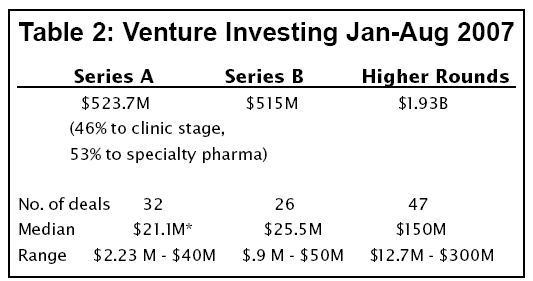BioWorld Today Columnist
My attention was captured this week by the San Jose Mercury News headline, "Cuts Worry Stanford, Berkeley Scholars." It seems that the shift in federal spending to disaster relief post-Katrina and supporting the wars in Iraq and Afghanistan have cut into our budget for science.
A new National Science Foundation report found that - no surprise - local and state governments have not increased their science support budgets to make up the difference.
Instead, those local sources are failing to keep up with inflation, much less the cost of the war machine.
Stanford University sources said that federal funding for research dropped 5 percent from $574.7 million in 2005 to $540 million in 2006. University of California at Berkeley reported a sharp 10 percent drop in its funding.
Every biotech entrepreneur and investor knows that when the dollars going into the front end of the pipeline drop off, the value coming out of the back end is threatened as well. VCs still are trying to recover their nerve to invest in truly innovative new science - reformulating and trying novel combinations of existing drugs is still a favored approach.
That doesn't bode well for the ongoing attempts of universities to grow their entrepreneurial practice on campus - though maybe the net effect will be to drive them ever-more quickly into the arms of the corporate world.
Amgen is in the process of shedding staff, thanks to an unpleasant collision with federal government "meanies" over how red cell growth factor should be used and reimbursed. Genentech still seems intent on following Pfizer's "Live Gigantic or Bust" motto, even as we watch Pfizer itself dump ballast.
Our industry continues to struggle with the need for novel company structures and business strategies to change the financial equation to fit today's realities. The good news - entrepreneurs continue to spring up with snazzy approaches to new drugs using new models of company development.
Maybe this increasingly Darwinian time, with the ever-exciting presidential elections creeping closer, will provide the final jolt needed to kick-start biotech into the next century.
Before we take a look at the year 2007, refresh yourself about what 2006 looked like. (See Table 1, below.)

Last year showed a strong trend for plowing theoretically early-stage dollars into what sure looked like clinical-stage deals. Specialty pharma structures took the bulk of the first-round dollars.
Things are looking different so far for 2007. (See Table 2, below.)

The investor focus is still on risk reduction via specialty pharma-type deals, where in-licensed candidates and new formulation applied to marketed products buffers the risk of discovery. But those deals represent a much smaller portion of the Series A dollars (53 percent in 2006 vs. 70 percent in 2007).
I like to think that is an indication that our investors are getting braver!
Over on the U.S. IPO side of the business, things are chugging along. (See Table 3, below.) We are right on target to repeat 2006's 21 IPOs by year-end, and are about $100 million ahead in dollars raised year-to-date.

Let's hope that bodes well for the rest of 2007. Our banker friends are getting tired of waiting for the booming market to provide better biotech transaction fees.
Robbins-Roth, Ph.D., founding partner of BioVenture Consultants, can be reached at biogodess@earthlink.net. Her opinions do not necessarily reflect those of BioWorld Today.

